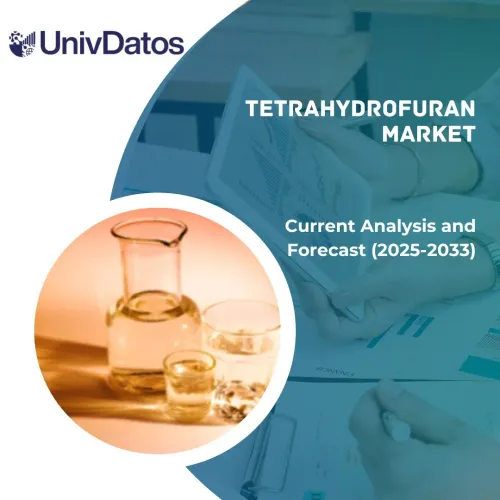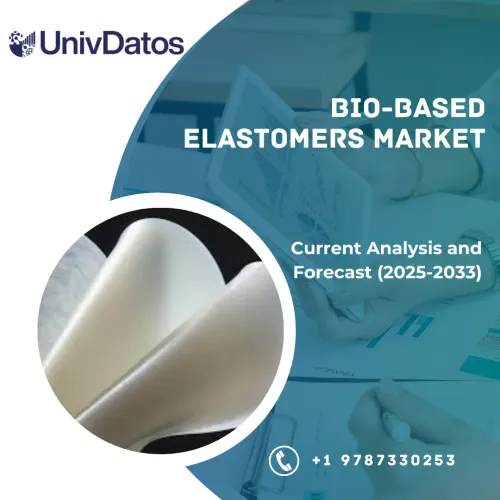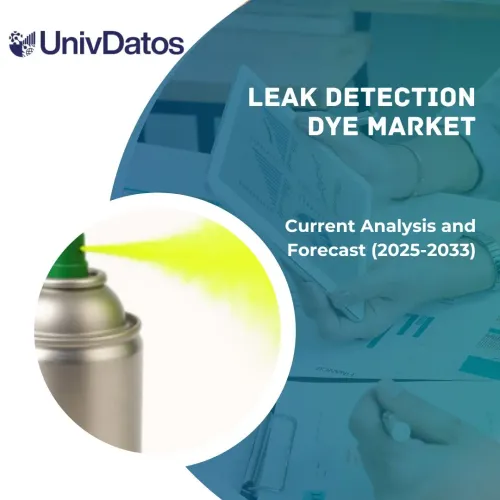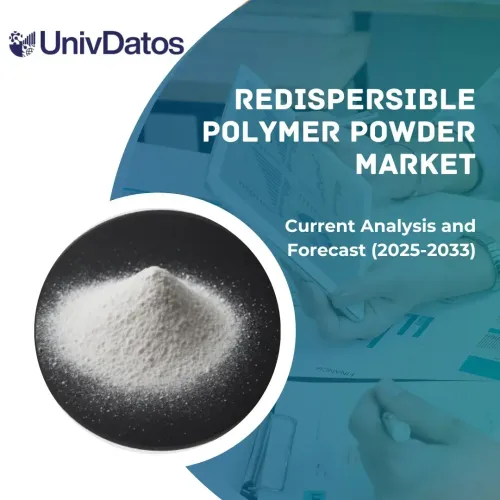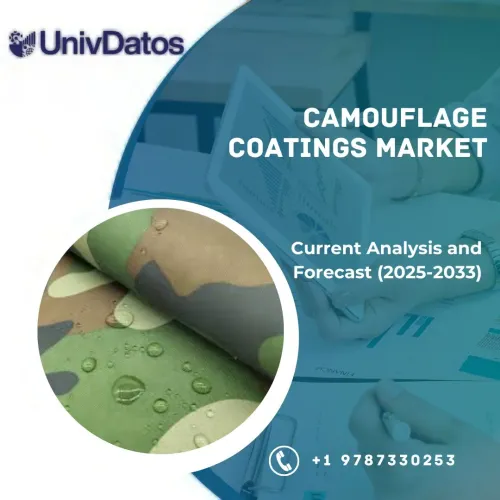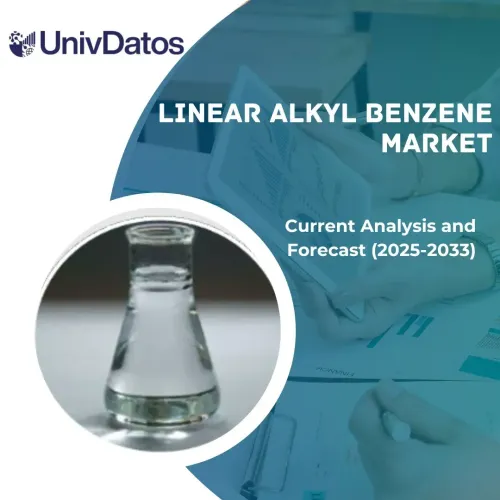- Home
- Chi siamo
- Settore
- Servizi
- Lettura
- Contattaci
Mercato della pelle a base biologica: analisi attuale e previsioni (2024-2032)
Accento sulla fonte (Sughero, Mais, Avvolti di frutta, Ananas, Cactus, Cortecce degli alberi, Altri); Per applicazione (Calzature, Abbigliamento e accessori, Altri); Regione/Paese
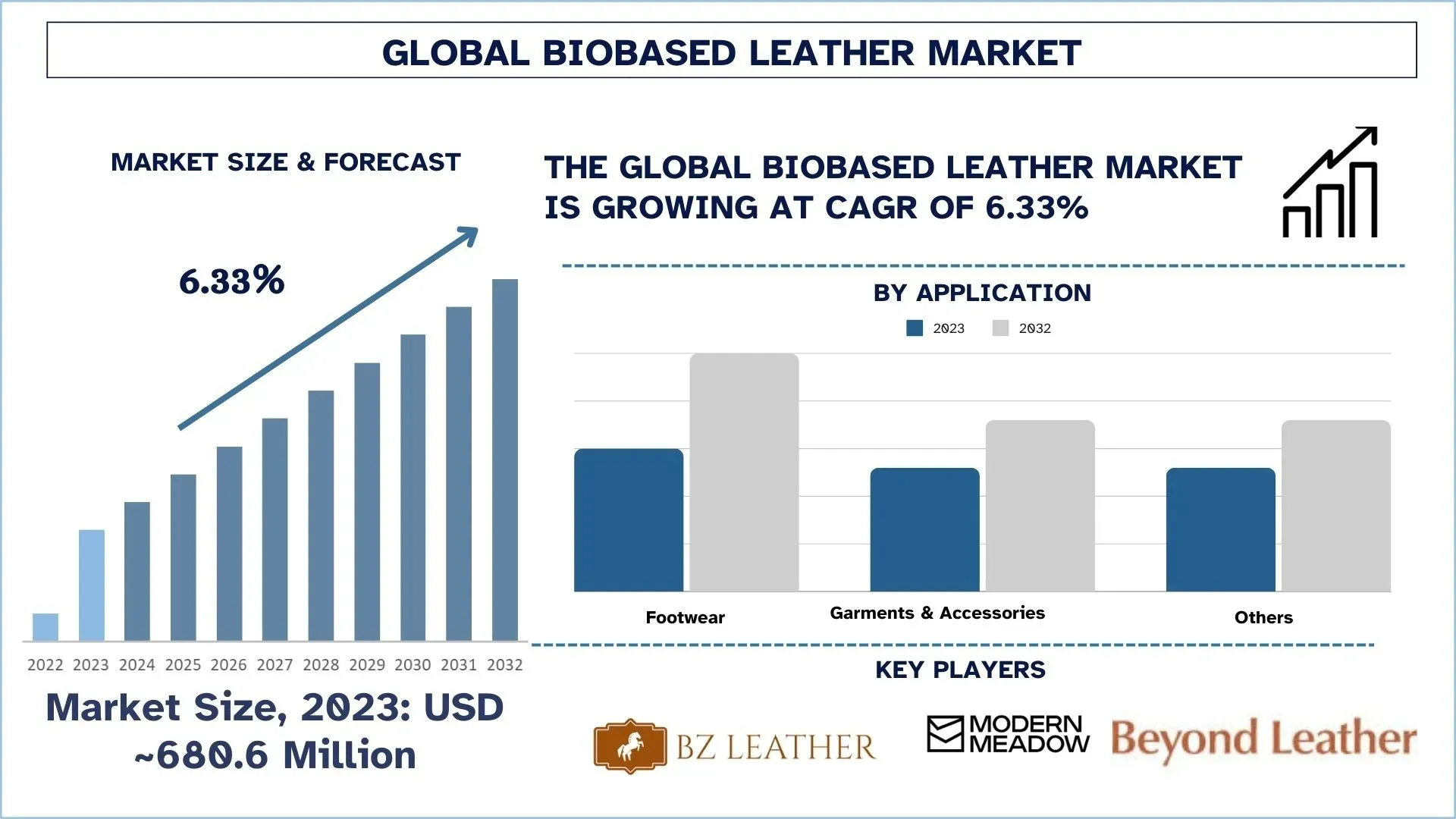
Dimensioni e previsioni del mercato della pelle a base biologica
Il mercato della pelle a base biologica è stato valutato a 680,6 milioni di dollari nel 2023 e si prevede che crescerà a un forte CAGR di circa il 6,33% durante il periodo di previsione (2024-2032). Il mercato globale della pelle a base biologica è cresciuto enormemente perché i prodotti sostenibili vengono adottati in tutti i settori, in particolare nel settore della moda, nell'automotive e nell'industria del mobile. La pelle sostenibile a base di bioprodotti provenienti da piante, funghi e scarti agricoli è un sostituto migliore della pelle animale. Questa innovazione sostituisce la pelle convenzionale, che ha implicazioni sociali ed ecologiche perché viene prodotta attraverso un uso intensivo di risorse e comporta un trattamento chimico.
Analisi del mercato della pelle a base biologica
Si prevede che il mercato della pelle a base biologica crescerà in futuro a causa della crescente consapevolezza legata alla sostenibilità, dell'aumento delle misure governative per regolamentare questo settore e della tendenza globale generale verso prodotti vegani e cruelty-free. La pelle a base biologica è un concetto sviluppato più di recente che è apparso sul mercato con la preoccupazione di aziende e marchi verso modelli di business sostenibili. I nuovi e imminenti progressi tecnologici, la velocità con cui i clienti stanno adottando questo materiale e altre opportunità indicano il futuro di questo membro della famiglia dei compositi.
Tendenze del mercato della pelle a base biologica
Innovazioni sui materiali: La tecnologia avanzata nella scienza dei materiali può aiutare i produttori a sviluppare vari sostituti della pelle a base biologica. Ecco perché oggi ci sono novità per la produzione di materiali per prodotti come la pelle animale come Pinatex - foglia di ananas, Mylo - micelio di funghi e Desserto - pelle di cactus. Questi offrono concetti di durata e flessibilità insieme all'estetica come la normale pelle, ma con un danno ridotto per l'ambiente nella loro produzione.
Partnership con marchi globali: La catena del valore della pelle a base biologica oggi è supportata dai colossi della moda globale e dell'industria automobilistica. Dall'altro lato, la cooperazione tra gli innovatori di materiali e i produttori convenzionali ha richiesto l'adozione di materiali a base biologica. Ad esempio, Adidas ha stretto una partnership con Bolt Threads per utilizzare la pelle di funghi Mylo che sta portando sul mercato e Hermès è in comunicazione con startup che vogliono utilizzare materiali sostenibili nella produzione dei loro prodotti di lusso.
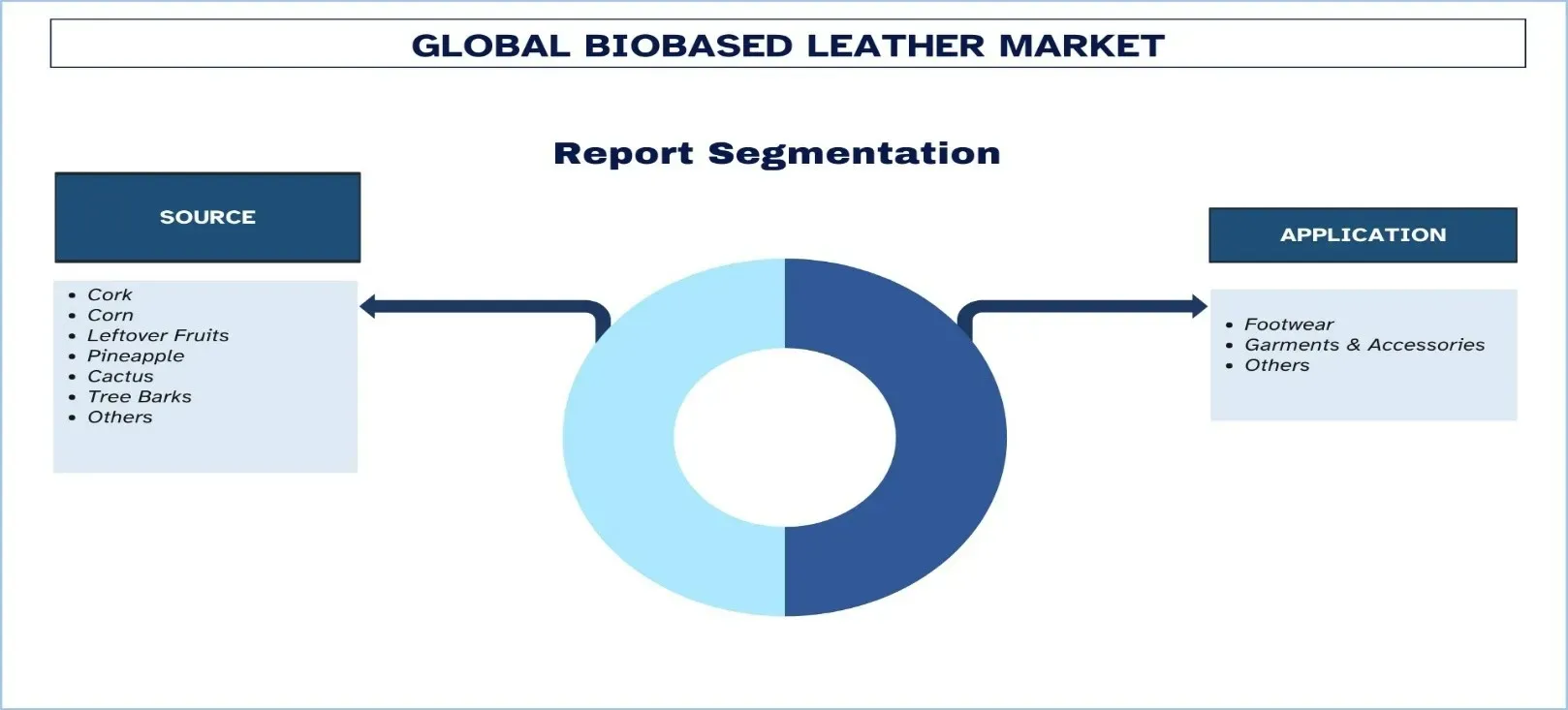
Si prevede che l'Europa crescerà con un CAGR significativo durante il periodo di previsione
L'Europa ha contribuito in modo significativo all'espansione del mercato della pelle a base biologica. Detiene la quota di mercato più significativa nel mercato della pelle a base biologica grazie a diversi motivi, tra cui la sua attenzione alla sostenibilità, all'innovazione e alle politiche ambientali. I consumatori e i governi dei paesi europei stanno diventando consapevoli e stanno optando per prodotti verdi e sostenibili in diversi settori come la moda, l'automobile e l'arredamento. Ciò ha aumentato la ricerca di pelle biologica come sostituto tessile più rispettoso dell'ambiente e socialmente consapevole della pelle di origine animale.
Attualmente, c'è una domanda di prodotti che non sono testati su animali, vegani e rispettosi dell'ambiente nell'industria della moda, specialmente in Germania, Francia e Regno Unito. Di conseguenza, i marchi di moda europei e i produttori di beni di lusso hanno preso una nuova frontiera introducendo la pelle a base biologica sul mercato. Inoltre, diverse aziende in via di sviluppo in Europa sono sostituenti di pelle a base biologica di nuova generazione da fibre vegetali, funghi e altre risorse naturali, il che a sua volta sta migliorando ancora di più il mercato.
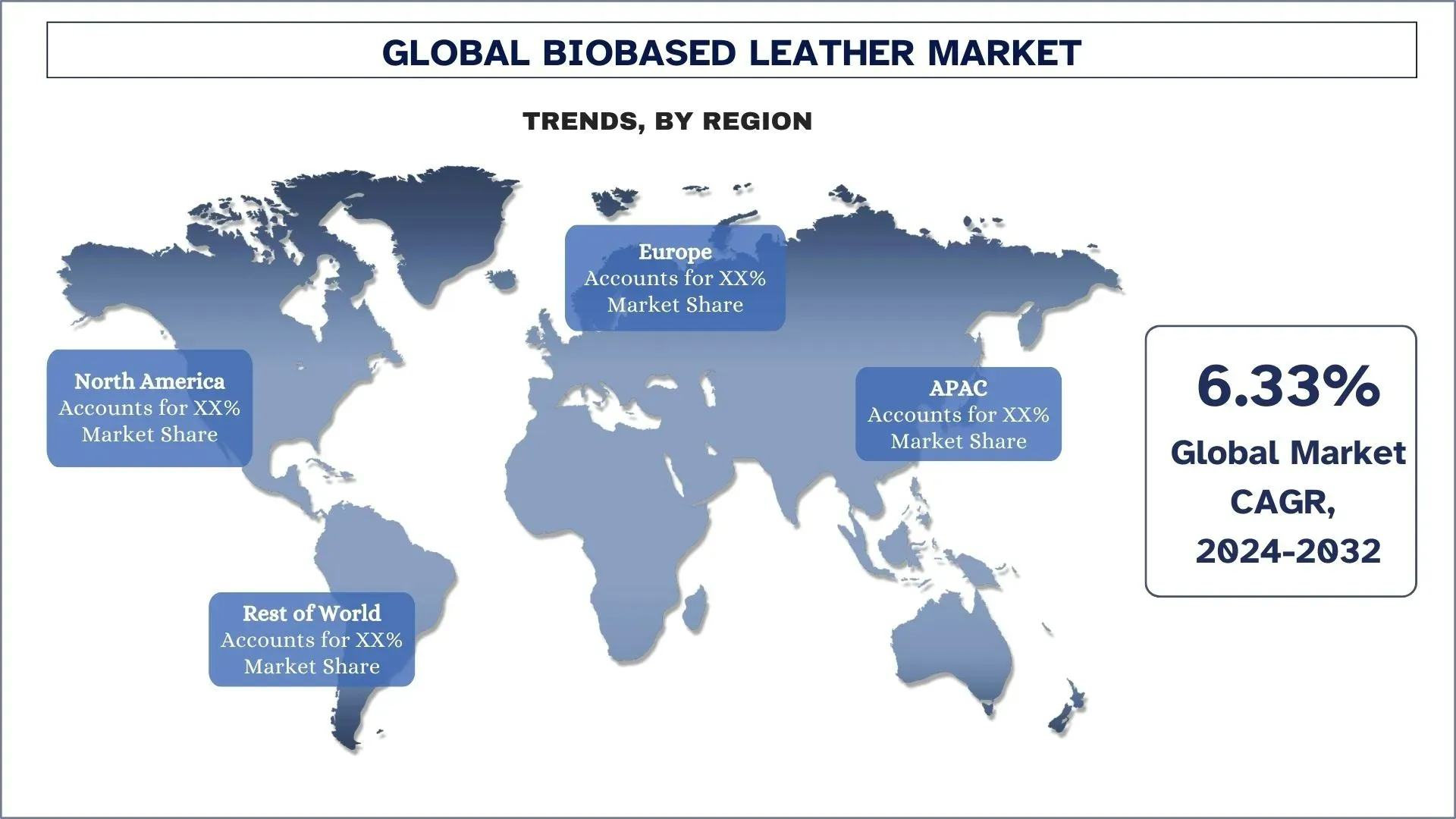
Panoramica del settore della pelle a base biologica
Il mercato della pelle a base biologica è competitivo e frammentato, con la presenza di diversi attori di mercato globali e internazionali. Gli attori chiave stanno adottando diverse strategie di crescita per migliorare la loro presenza sul mercato, come partnership, accordi, collaborazioni, lancio di nuovi prodotti, espansioni geografiche e fusioni e acquisizioni. Alcuni dei principali attori che operano nel mercato sono BZ Leather, Modern Meadow, Beyond Leather, Ananas Anam, Banofi, Design Boom, Tomtex, Fruitleather Rotterdam, Natural Fiber Welding Inc e Tjeerd Veenhoven Studio.
Novità sul mercato della pelle a base biologica
Nel 2022, Ananas Anam ha collaborato con il leader della tecnologia automobilistica FORVIA per sviluppare materiali per interni di veicoli realizzati con fibre di scarto di foglie di ananas.
Copertura del report sul mercato della pelle a base biologica
Attributo del report | Dettagli |
Anno base | 2023 |
Periodo di previsione | 2024-2032 |
Slancio di crescita | Accelerare a un CAGR del 6,33% |
Dimensione del mercato 2023 | 680,6 milioni di dollari |
Analisi regionale | Nord America, Europa, APAC, Resto del mondo |
Principale regione che contribuisce | Si prevede che il Nord America crescerà al CAGR più alto durante il periodo previsto |
Paesi chiave coperti | Stati Uniti, Canada, Germania, Regno Unito, Spagna, Francia, Cina, Giappone e India |
Società profilate | BZ Leather, Modern Meadow, Beyond Leather, Ananas Anam, Banofi, Design Boom, Tomtex, Fruitleather Rotterdam, Natural Fiber Welding Inc e Tjeerd Veenhoven Studio. |
Ambito del report | Tendenze del mercato, driver e vincoli; Stima e previsione delle entrate; Analisi della segmentazione; Analisi della domanda e dell'offerta; Panorama competitivo; Profilazione aziendale |
Segmenti coperti | Per fonte; Per applicazione; Regione/Paese |
Motivi per acquistare questo report:
Lo studio include l'analisi delle dimensioni del mercato e delle previsioni convalidate da esperti del settore chiave autenticati.
Il report presenta una rapida panoramica delle prestazioni complessive del settore a colpo d'occhio.
Il report copre un'analisi approfondita dei principali colleghi del settore con un focus primario sulle principali finanze aziendali, portafogli di prodotti, strategie di espansione e sviluppi recenti.
Esame dettagliato dei driver, dei vincoli, delle tendenze chiave e delle opportunità prevalenti nel settore.
Lo studio copre in modo completo il mercato attraverso diversi segmenti.
Analisi approfondita a livello regionale del settore.
Opzioni di personalizzazione:
Il mercato globale della pelle a base biologica può essere ulteriormente personalizzato in base alle esigenze o a qualsiasi altro segmento di mercato. Oltre a questo, UMI comprende che potresti avere le tue esigenze aziendali, quindi sentiti libero di metterti in contatto con noi per ottenere un report che si adatti completamente alle tue esigenze.
Indice
Metodologia di Ricerca per l'Analisi del Mercato delle Tecnologie per il Miglioramento della Privacy (2022-2032)
L'analisi del mercato storico, la stima del mercato attuale e la previsione del mercato futuro del mercato globale delle Tecnologie per il Miglioramento della Privacy sono stati i tre principali passaggi intrapresi per creare e analizzare l'adozione delle Tecnologie per il Miglioramento della Privacy nelle principali regioni a livello globale. È stata condotta un'approfondita ricerca secondaria per raccogliere i dati storici del mercato e stimare le dimensioni del mercato attuale. In secondo luogo, per convalidare queste intuizioni, sono state prese in considerazione numerose scoperte e ipotesi. Inoltre, sono state condotte anche interviste primarie approfondite con esperti del settore lungo tutta la catena del valore del mercato globale delle Tecnologie per il Miglioramento della Privacy. Dopo l'assunzione e la convalida dei dati di mercato attraverso interviste primarie, abbiamo impiegato un approccio top-down/bottom-up per prevedere le dimensioni complete del mercato. Successivamente, sono stati adottati metodi di suddivisione del mercato e triangolazione dei dati per stimare e analizzare le dimensioni del mercato dei segmenti e sottosegmenti del settore. La metodologia dettagliata è spiegata di seguito:
Analisi delle Dimensioni Storiche del Mercato
Passaggio 1: Studio Approfondito delle Fonti Secondarie:
È stato condotto uno studio secondario dettagliato per ottenere le dimensioni storiche del mercato delle Tecnologie per il Miglioramento della Privacy attraverso fonti interne aziendali come relazioni annuali e bilanci, presentazioni sulle prestazioni, comunicati stampa, ecc. e fonti esterne tra cui riviste, notizie e articoli, pubblicazioni governative, pubblicazioni dei concorrenti, rapporti di settore, database di terze parti e altre pubblicazioni credibili.
Passaggio 2: Segmentazione del Mercato:
Dopo aver ottenuto le dimensioni storiche del mercato delle Tecnologie per il Miglioramento della Privacy, abbiamo condotto un'analisi secondaria dettagliata per raccogliere informazioni storiche sul mercato e quote di mercato per diversi segmenti e sottosegmenti per le principali regioni. I principali segmenti inclusi nel rapporto sono componenti, tipologia, applicazione, utente finale e regioni. Sono state condotte ulteriori analisi a livello di paese per valutare l'adozione complessiva dei modelli di test in quella regione.
Passaggio 3: Analisi dei Fattori:
Dopo aver acquisito le dimensioni storiche del mercato di diversi segmenti e sottosegmenti, abbiamo condotto un'analisi dei fattori dettagliata per stimare le dimensioni attuali del mercato delle Tecnologie per il Miglioramento della Privacy. Inoltre, abbiamo condotto un'analisi dei fattori utilizzando variabili dipendenti e indipendenti come componente, tipologia, applicazione, utente finale e regioni del mercato delle Tecnologie per il Miglioramento della Privacy. È stata condotta un'analisi approfondita per gli scenari di domanda e offerta considerando le principali partnership, fusioni e acquisizioni, espansione aziendale e lanci di prodotti nel settore del mercato delle Tecnologie per il Miglioramento della Privacy in tutto il mondo.
Stima e Previsione delle Dimensioni Attuali del Mercato
Dimensionamento Attuale del Mercato: Sulla base di informazioni utili dai 3 passaggi precedenti, siamo giunti alle dimensioni attuali del mercato, ai principali attori nel mercato globale delle Tecnologie per il Miglioramento della Privacy e alle quote di mercato dei segmenti. Tutte le quote percentuali richieste e le suddivisioni del mercato sono state determinate utilizzando l'approccio secondario sopra menzionato e sono state verificate tramite interviste primarie.
Stima e Previsione: Per la stima e la previsione del mercato, sono stati assegnati pesi a diversi fattori, tra cui driver e tendenze, vincoli e opportunità disponibili per le parti interessate. Dopo aver analizzato questi fattori, sono state applicate tecniche di previsione pertinenti, ovvero l'approccio top-down/bottom-up, per arrivare alla previsione di mercato per il 2032 per diversi segmenti e sottosegmenti nei principali mercati a livello globale. La metodologia di ricerca adottata per stimare le dimensioni del mercato comprende:
Le dimensioni del mercato del settore, in termini di entrate (USD) e il tasso di adozione del mercato delle Tecnologie per il Miglioramento della Privacy nei principali mercati a livello nazionale
Tutte le quote percentuali, le suddivisioni e le ripartizioni dei segmenti e sottosegmenti di mercato
I principali attori nel mercato globale delle Tecnologie per il Miglioramento della Privacy in termini di prodotti offerti. Inoltre, le strategie di crescita adottate da questi attori per competere nel mercato in rapida crescita
Convalida delle Dimensioni e della Quota di Mercato
Ricerca Primaria: Sono state condotte interviste approfondite con i Key Opinion Leaders (KOL) tra cui dirigenti di alto livello (CXO/VP, responsabile vendite, responsabile marketing, responsabile operativo, responsabile regionale, responsabile paese, ecc.) nelle principali regioni. I risultati della ricerca primaria sono stati quindi riassunti ed è stata eseguita un'analisi statistica per dimostrare l'ipotesi dichiarata. I contributi della ricerca primaria sono stati consolidati con i risultati secondari, trasformando così le informazioni in intuizioni utili.
Suddivisione dei Partecipanti Primari nelle Diverse Regioni
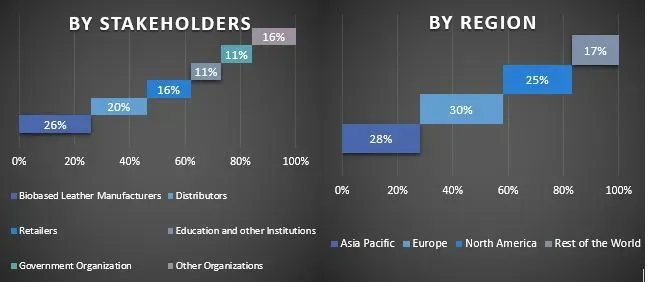
Ingegneria del Mercato
La tecnica di triangolazione dei dati è stata impiegata per completare la stima complessiva del mercato e per arrivare a numeri statistici precisi per ciascun segmento e sottosegmento del mercato globale delle Tecnologie per il Miglioramento della Privacy. I dati sono stati suddivisi in diversi segmenti e sottosegmenti dopo aver studiato vari parametri e tendenze nel componente, tipologia, applicazione, utente finale e regioni del mercato globale delle Tecnologie per il Miglioramento della Privacy.
L'obiettivo principale dello Studio sul Mercato Globale delle Tecnologie per il Miglioramento della Privacy
Le tendenze attuali e future del mercato globale delle Tecnologie per il Miglioramento della Privacy sono state individuate nello studio. Gli investitori possono ottenere informazioni strategiche per basare la loro discrezione per gli investimenti sull'analisi qualitativa e quantitativa eseguita nello studio. Le tendenze attuali e future del mercato hanno determinato l'attrattiva complessiva del mercato a livello regionale, fornendo una piattaforma per il partecipante industriale per sfruttare il mercato non sfruttato per beneficiare di un vantaggio di first-mover. Altri obiettivi quantitativi degli studi includono:
Analizzare le dimensioni attuali e previste del mercato delle Tecnologie per il Miglioramento della Privacy in termini di valore (USD). Inoltre, analizzare le dimensioni attuali e previste del mercato di diversi segmenti e sottosegmenti.
I segmenti nello studio includono aree di componente, tipologia, applicazione e utente finale e regioni.
Definire e analizzare il quadro normativo per le Tecnologie per il Miglioramento della Privacy
Analizzare la catena del valore coinvolta con la presenza di vari intermediari, insieme all'analisi del comportamento dei clienti e dei concorrenti del settore.
Analizzare le dimensioni attuali e previste del mercato delle Tecnologie per il Miglioramento della Privacy per la regione principale.
I principali paesi delle regioni studiati nel rapporto includono Asia Pacifico, Europa, Nord America e il resto del mondo
Profili aziendali del mercato delle Tecnologie per il Miglioramento della Privacy e le strategie di crescita adottate dagli operatori di mercato per sostenere il mercato in rapida crescita.
Analisi approfondita a livello regionale del settore
Domande frequenti FAQ
Q1: Qual è la dimensione attuale del mercato e il potenziale di crescita del mercato della pelle a base biologica?
Q2: Quali sono i fattori trainanti per la crescita del mercato della pelle a base biologica?
Q3: Qual è il segmento con la quota maggiore del mercato della pelle biobased per fonte?
Q4: Quali sono le tecnologie emergenti e le tendenze nel mercato della pelle a base biologica?
D5: Quale regione dominerà il mercato della pelle a base biologica?
Correlati Report
I clienti che hanno acquistato questo articolo hanno acquistato anche

